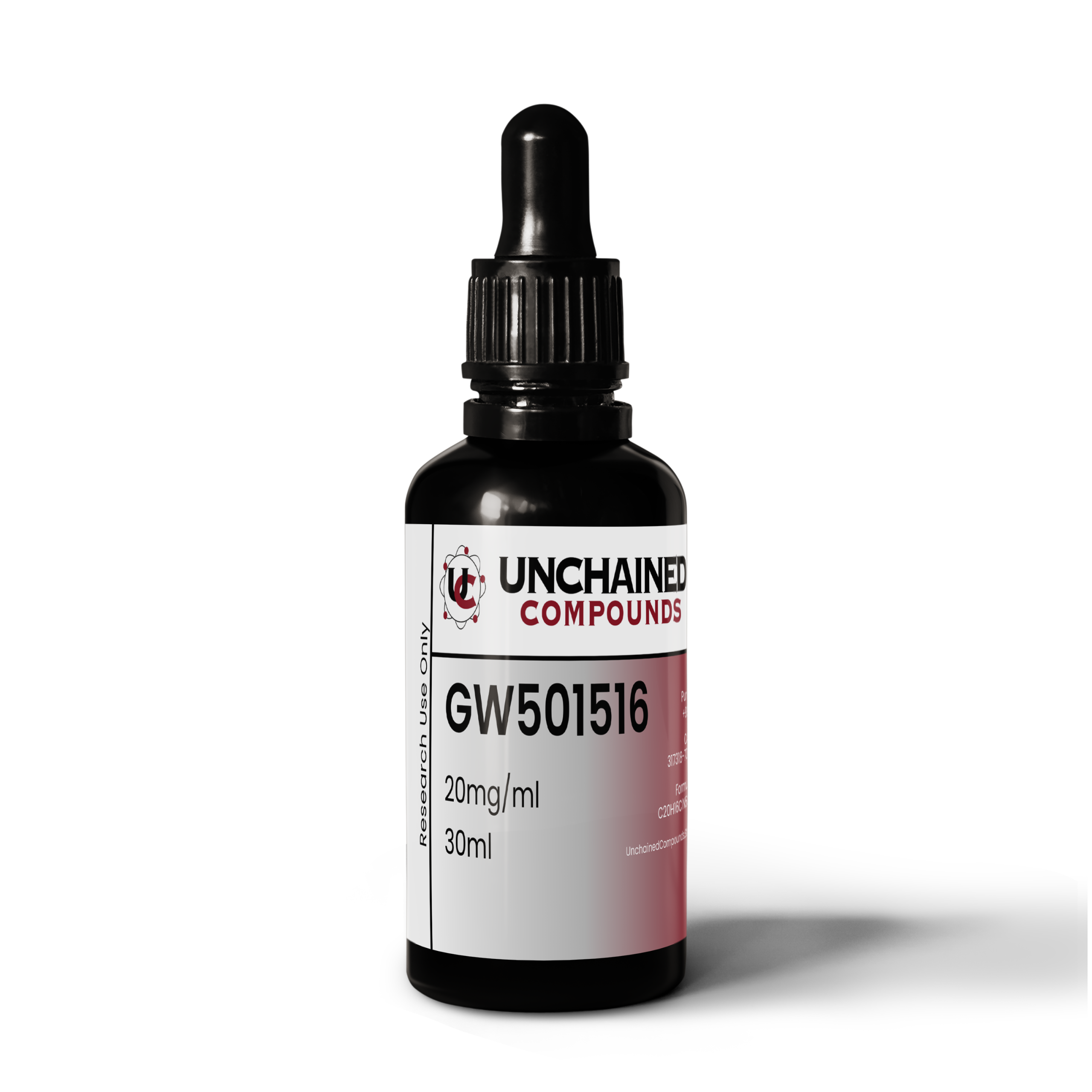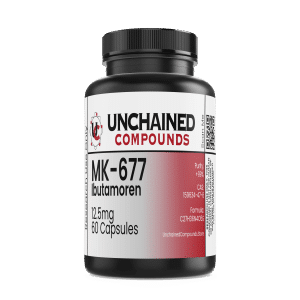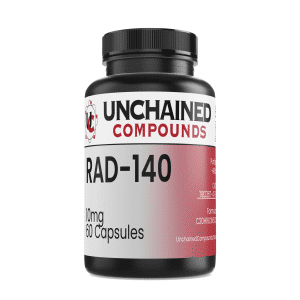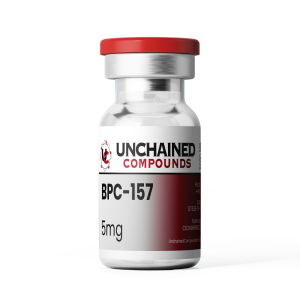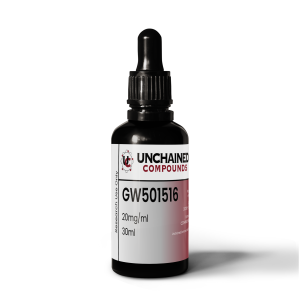Description






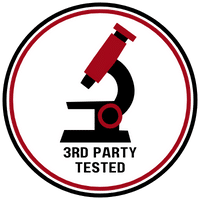
GW501516 is a selective agonist of the PPARδ receptor that displays high affinity and potency for PPARδ with > 1,000 fold selectivity over PPARα and PPARγ. In rats, binding of GW501516 to PPARδ recruits the coactivator PGC-1α . It was initially discovered during a research collaboration between GSK and Ligand Pharmaceuticals that began in 1992 The drug entered into clinical development as a drug candidate for metabolic and cardiovascular diseases, but was abandoned in 2007 because animal testing showed that the drug caused cancer to develop rapidly in several organs
Specifications
- Chemical Formula: C21H18F3NO3S2
- Molecular Mass: 453.50 g/mol
- Synonyms: GSK 516, GW1516, GW 501516, GW 501,516, Cardarine
- CAS Number: 317318-70-0
- PubChem: 9803963
- Total Amount of the Active Ingredient: 20 mg/ml
- Shelf Life: 36 months
Research Studies
Abstract
GW501516-activated peroxisome proliferator-activated receptor (PPAR) β/δ and G-protein-coupled receptor (GPR) 40 were shown to protect pancreatic β cells against lipoapoptosis. Therefore, this study aimed to investigate whether activated PPARβ/δ could protect type 2 diabetic rats from lipoapoptosis through regulation of GPR40 and to compare the protective effects of activated PPARβ/δ and PPARγ. We made an animal model of type 2 diabetic lipoapoptosis by feeding spontaneously type 2 diabetic Goto-Kakizaki (GK) rats with a high-fat diet (HFD) to evaluate the effects of PPARβ/δ on islet β cell apoptosis. And, treated INS-1 cells with 0.5 mM palmitate (PAM) in the absence/presence of GW501516 (a specific agonist of PPAR β/δ) and with/without transfection of GPR40 siRNA to explore the underlying molecular mechanism. HFD aggravated GK rats’ poorer INSR30, lower mass, greater apoptosis of β cells, lower mass, and lower expression of GPR40, which were similarly improved by GW501516 at 3 or 6 mg/kg day and pioglitazone. Compared with pioglitazone, GW501516 caused more weight loss and had no effect on insulin resistance. GW501516 protected INS-1 cells from PAM-induced apoptosis by upregulating GPR40 and activating Akt/Bcl-2/caspase-3. Activated extracellular regulated protein kinases (ERK) was relevant to the lipoapoptosis in INS-1 cells, but was not involved in the antilipoapoptotic effect of GW501516. These results showed that the PPARβ/δ agonist GW501516 protected β cells from lipoapoptosis and improved β cell mass by upregulating GPR40 and activating the Akt/Bcl-2/caspase-3 pathway, but not the ERK-signaling pathway.
The Role of PPARδ Agosnist GW501516 in Rats with Gestational Diabetes Mellitus
Abstract
Background: Gestational diabetes mellitus (GDM) is a disorder of glucose metabolism that occurs or is found for the first time during pregnancy. GDM is very harmful and urgently needs drug treatment to improve pregnancy outcome. PPARδ is involved in a variety of biological processes related to glycolipid metabolism in the body, suggesting that it may be closely related to insulin resistance and impaired glucose tolerance. The role of PPARδ agonist GW501516 in gestational diabetes has not been studied.
Methods: Firstly, the rat model of GDM was established. Then, fasting blood-glucose (FGB), fasting insulin (FINS), HOMA-islet resistance index (HOMA-IR) and insulin sensitivity index (ISI) of GDM rats treated with GW501516 were measured on day 3, day 10 and day 17. Glucose tolerance test was performed on the 20th day of gestation to measure glucose tolerance in rats. The expression of PPARδ and Angptl8 in islet tissues of rats was detected by Western blot and immunohistochemistry (IHC). Histopathological changes of islet were detected by HE stain; apoptosis rate of islet cells was detected by Tunel; and expression of apoptosis-related proteins in the cells was detected by Western blot. The biochemical kits were used to detect the expression of lipid metabolism-related factors in blood of GDM rats after the PPARδ agonist GW501516 treatment. Finally, the expression of SREBP-1c and GLUT2 in islet tissues was detected by RT-qPCR and IHC.
Results: The PPARδ agonist GW501516 decreased the expression of FGB, FINS and HOMA-IR in GDM rats, and we found that GW501516 decreased ISI in GDM rats. GW501516 increased glucose tolerance in GDM rats too. In GDM rats, the expression of PPARδ in islet decreased and the expression of Angptl8 increased, which was reversed by GW501516. In addition, we also found that GW501516 can improve the damaged islet tissue of GDM rats, reduce the apoptosis rate of islet cells and inhibit the expression of lipid metabolism-related factors in the blood. Finally, we found that GW501516 inhibited the expression of SREBP-1c and promoted the expression of GLUT2 in the islet tissue.
Conclusion: The PPARδ agonist GW501516 could improve the blood glucose level, damaged islet tissue and increase the insulin content in the rats with GDM, possibly by regulating the SREBP-1c/GLUT2 pathway. Our study provided a new basis for clinical treatment of GDM in pregnant women with PPARδ agonist GW501516.
Abstract
The airway wall remodeling observed in asthma is associated with subepithelial fibrosis and enhanced activation of human bronchial fibroblasts (HBFs) in the fibroblast to myofibroblast transition (FMT), induced mainly by transforming growth factor-β (TGF-β). The relationships between asthma severity, obesity, and hyperlipidemia suggest the involvement of peroxisome proliferator-activated receptors (PPARs) in the remodeling of asthmatic bronchi. In this study, we investigated the effect of PPARδ ligands (GW501516 as an agonist, and GSK0660 as an antagonist) on the FMT potential of HBFs derived from asthmatic patients cultured in vitro. This report shows, for the first time, the inhibitory effect of a PPARδ agonist on the number of myofibroblasts and the expression of myofibroblast-related markers-α-smooth muscle actin, collagen 1, tenascin C, and connexin 43-in asthma-related TGF-β-treated HBF populations. We suggest that actin cytoskeleton reorganization and Smad2 transcriptional activity altered by GW501516 lead to the attenuation of the FMT in HBF populations derived from asthmatics. In conclusion, our data demonstrate that a PPARδ agonist stimulates antifibrotic effects in an in vitro model of bronchial subepithelial fibrosis. This suggests its potential role in the development of a possible novel therapeutic approach for the treatment of subepithelial fibrosis during asthma.
Disclaimer
The information provided above is not intended to substitute medical advice, diagnosis, or treatment. Should you have any questions regarding a medical condition, seek the advice of your physician or a qualified healthcare provider. In no case should medical advice be disregarded or delayed because of what you have read or seen. We bear no responsibility or liability for your use of any of our research compounds and products. Please note that they are being sold for research purposes ONLY. We do NOT condone any personal use.
NOTE: In some cases wherein the assigned top colors are out of stock, a different top color will be used to ensure that your order will not be delayed. Should you need assistance identifying the peptide vial that you received, please send us an email at support@unchainedcompounds.store
ALL ARTICLES AND PRODUCT INFORMATION PROVIDED ON THIS WEBSITE ARE FOR INFORMATIONAL AND EDUCATIONAL PURPOSES ONLY.
The products offered on this website are intended for in-vitro studies only. In-vitro studies (Latin: “in glass”) are performed outside the body. These products are not medicines or drugs and have not been approved by the FDA to prevent, treat, or cure any medical condition, ailment, or disease. Bodily introduction of any kind into humans or animals is strictly forbidden by law.


